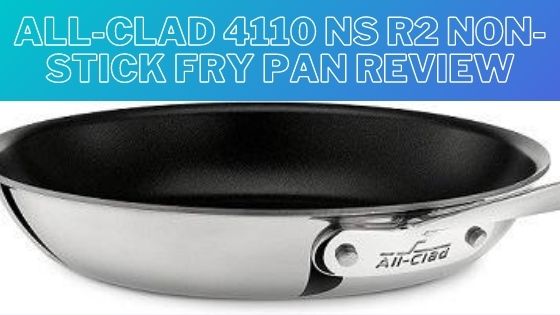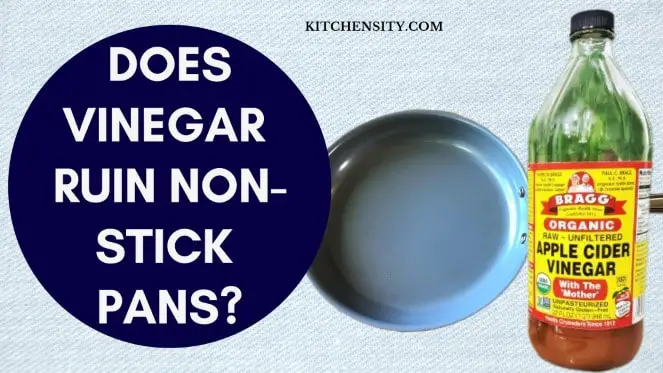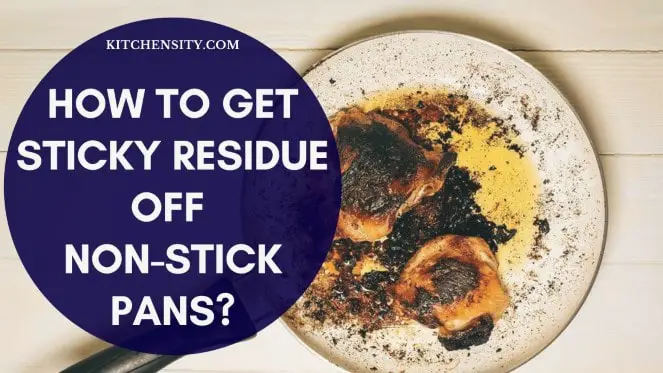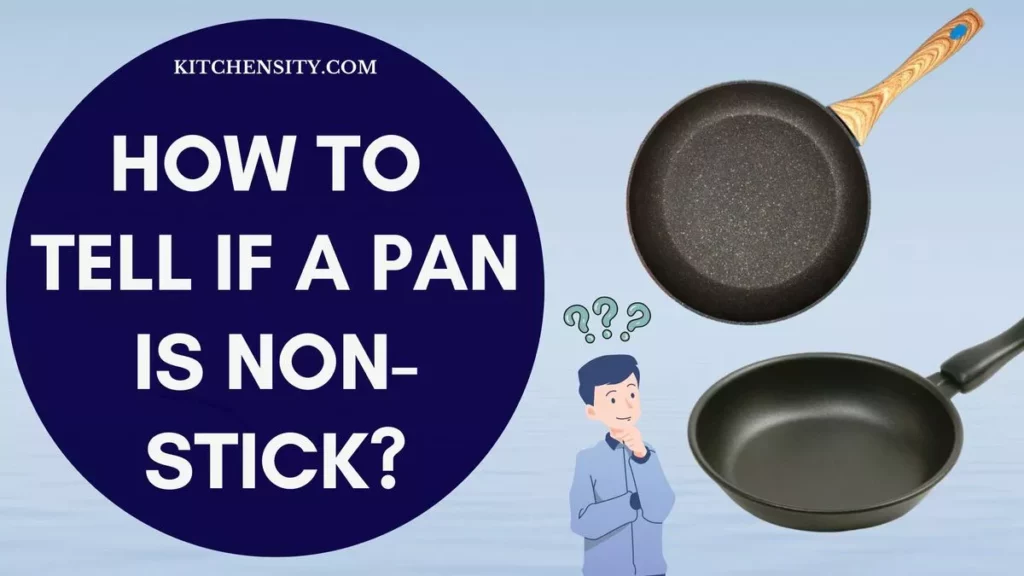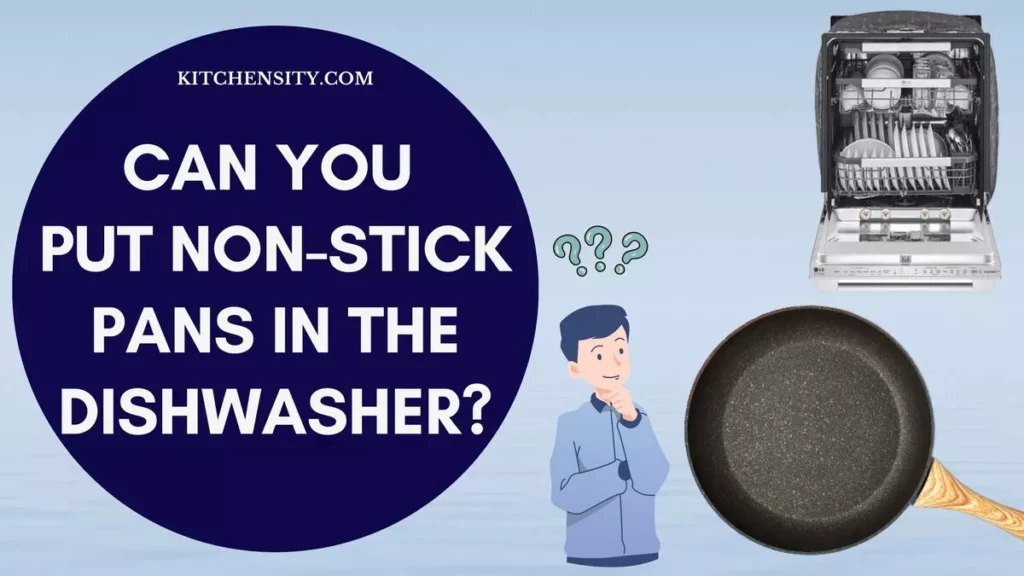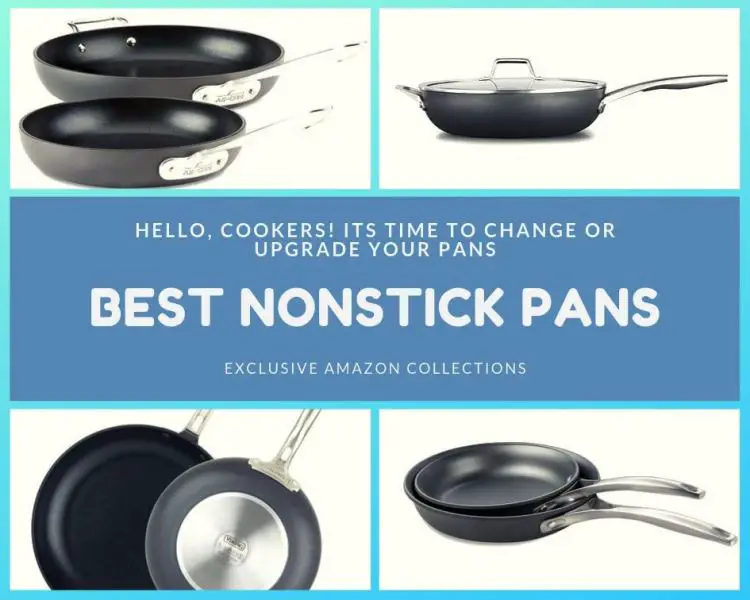Cooking is an art, and the tools we use in the kitchen play a crucial role in creating culinary masterpieces. Among these tools, non-stick pans have become indispensable for their ability to make cooking and cleaning a breeze.
However, the convenience they offer comes with the responsibility of proper care and maintenance to ensure their longevity. In this guide, we will delve into the essential practices and strategies to extend the lifespan of non-stick pans.
Let’s explore the factors that impact non-stick pan durability and discover the best practices for keeping them in optimal condition.
Table of Contents
- 1 How To Extend The Lifespan Of Non-Stick Pans?
- 2 Factors Affecting Non-Stick Pan Lifespan
- 3 Best Practices For Maintenance
- 4 Enhancing Non-Stick Pan Longevity Without Water
- 5 Environmental Impact And Sustainability Of Non-Stick Cookware
- 6 Final Thoughts: How To Extend The Lifespan Of Non-Stick Pans?
- 7 Frequently Asked Questions (FAQs)
- 7.1 How Do You Increase The Life Of A Non-Stick Pan?
- 7.2 Can I Use Metal Utensils With Non-Stick Pans?
- 7.3 Is It Necessary To Buy Expensive Non-Stick Pans For Durability?
- 7.4 How Do I Know When It’s Time To Replace A Non-Stick Pan?
- 7.5 What Is The Impact Of High Heat On Non-Stick Coatings?
- 7.6 Are There Any Health Concerns Associated With Non-Stick Cookware?
How To Extend The Lifespan Of Non-Stick Pans?
To extend the lifespan of non-stick pans, use gentle utensils and avoid cooking at high temperatures. Clean the pans with mild detergents, dry them thoroughly after each use, and occasionally apply a thin layer of oil for seasoning.
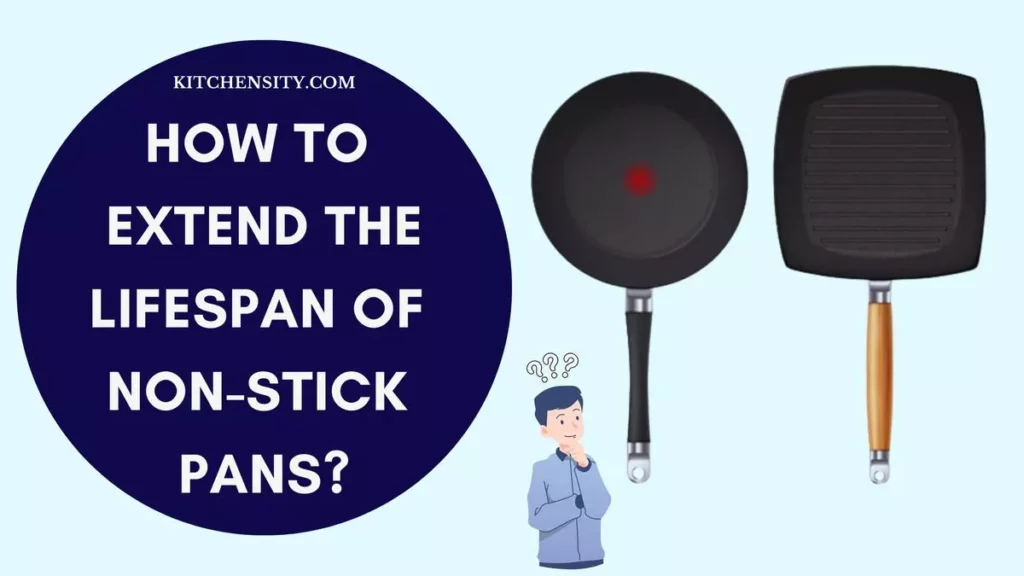
Steps to Extend Non-Stick Pan Lifespan:
- Choose The Right Utensils: Opt for soft utensils like silicone, wood, or nylon to prevent scratches on the non-stick surface. Metal utensils can be too harsh and lead to wear and tear.
- Mind The Heat: Avoid cooking at excessively high temperatures. Non-stick pans perform best at medium heat. High heat can cause the coating to degrade over time.
- Gentle Cleaning Practices: Use soft sponges, cloths, or non-abrasive brushes when cleaning. Harsh scouring pads can damage the non-stick coating. Mild dishwashing detergent is preferable.
- Dry Thoroughly After Cleaning: After washing, make sure the pan is completely dry before storage. Moisture can lead to oxidation and compromise the non-stick properties.
- Occasional Seasoning: Apply a thin layer of oil to the pan’s surface every few months to rejuvenate the non-stick coating. This simple seasoning helps maintain its effectiveness.
- Proper Storage: Store non-stick pans properly to avoid scratches. If stacking pans use soft liners in between. Ensure good ventilation to prevent moisture buildup.
- Regular Inspection: Periodically check the condition of the pan. Look for signs of wear, scratches, or changes in the non-stick surface. Address any issues promptly.
Also Read – Are Non-Stick Coatings Safe For Cooking?
Factors Affecting Non-Stick Pan Lifespan
Non-stick pans, valued for their convenience in the kitchen, are not immune to wear and tear. In this section, we will explore the common practices and elements that contribute to the wear and tear of non-stick coatings.
What Destroys Non-Stick Pans?
The longevity of non-stick pans can be significantly compromised by various factors, with one prominent concern being the misuse of utensils, particularly those made of metal. While non-stick pans are celebrated for their ability to reduce the need for excessive oil and ease the cooking and cleaning process, they are susceptible to damage when paired with metal utensils.
Non-stick coatings are vulnerable to scratches, and the use of metal utensils exacerbates this risk. Metal spatulas, forks, or whisks can leave marks on the non-stick surface, creating abrasions that diminish their effectiveness over time. These scratches not only compromise the aesthetic appeal of the pan but can also expose the underlying material, leading to uneven heating and potential hot spots.
To mitigate this risk, it is advisable to opt for utensils made from softer materials such as silicone, wood, or nylon. These alternatives offer the necessary durability for effective cooking while minimizing the risk of damaging the non-stick coating.
Also Read – Types Of Non-Stick Coatings
Does Leaving Water In A Non-Stick Pan Ruin It?
The practice of leaving water in a non-stick pan, although seemingly innocuous, can indeed have adverse effects on the pan’s longevity and overall performance. Water retention poses a risk to the non-stick coating, and understanding its impact is crucial for maintaining the pan’s effectiveness.
Leaving water in a non-stick pan, especially for prolonged periods, can lead to several issues:
- Promotes Oxidation: The presence of water can contribute to the oxidation of the pan, particularly if it has exposed metal edges or scratches. This oxidation process can compromise the integrity of the non-stick coating.
- Encourages Mold And Bacterial Growth: Stagnant water creates a conducive environment for mold and bacteria to thrive. This not only affects the hygiene of the pan but can also lead to the degradation of the non-stick surface.
- Contributes To Corrosion: In some cases, prolonged exposure to water can result in corrosion, especially if the pan is made of materials susceptible to rust. Corrosion can weaken the structure of the pan, making it more prone to damage.
To prevent water-related damage, it is advisable to promptly dry the non-stick pan after washing and avoid storing it with any residual moisture. Also, ensuring that the pan is completely dry before storage will contribute to maintaining its non-stick properties and extending its overall lifespan.
Also Read – Things To Look For When Buying Non-Stick Cookware
Does Soaking Non-Stick Pans Ruin Them?
Soaking non-stick pans, while often employed as a convenient cleaning method, requires careful consideration to prevent potential damage to the pan’s non-stick coating. Soaking, if done improperly, can indeed have adverse effects on the overall longevity and performance of non-stick pans.
Impact of Soaking on Coatings:
- Softening Of Non-Stick Surface: Prolonged soaking, especially in hot water, may lead to the softening of the non-stick coating. This softening makes the surface more susceptible to abrasions and scratches, diminishing its effectiveness over time.
- Potential For Delamination: Non-stick pans often contain multiple layers, including the non-stick coating. Soaking, especially with harsh detergents, can contribute to delamination—the separation of these layers. Delamination can result in uneven cooking and compromised non-stick properties.
- Exacerbation Of Scratches: If the pan has already incurred scratches from previous use or cleaning, soaking can exacerbate the damage. Water seeping into existing scratches may compromise the integrity of the coating and expose the underlying material.
To mitigate the risk of damage while still benefiting from the convenience of soaking, it is recommended to use mild detergents and avoid prolonged soaking. Also, employing gentle cleaning methods, such as soft sponges or brushes, can contribute to preserving the non-stick properties of the pan. Regularly assessing the condition of the pan and addressing any signs of wear promptly will aid in extending its overall lifespan.
Also Read – Can You Deep Fry In A Non-Stick Pan?
Best Practices For Maintenance
Maintaining non-stick pans involves adopting a set of best practices to ensure their longevity and optimal performance. From daily care routines to occasional seasoning, these practices contribute to preserving the non-stick coating and keeping your pans in good condition.
How Do You Keep Non-Stick Pans In Good Condition?
Keeping non-stick pans in good condition requires a combination of mindful usage, proper cleaning techniques, and careful storage practices. Here’s a detailed elaboration on the key aspects of maintaining the integrity of non-stick pans:
- Avoiding Metal Utensils:
- Explanation: The non-stick surface is vulnerable to scratches, particularly from metal utensils. It’s crucial to use utensils made of softer materials like silicone, wood, or nylon to minimize the risk of damaging the coating.
- Alternative Utensils: Opt for spatulas, tongs, or whisks with non-abrasive surfaces. This not only protects the non-stick layer but also ensures even cooking and prevents the release of potentially harmful particles into your food.
- Gentle Cleaning Techniques:
- Guidance: When cleaning non-stick pans, use soft sponges or brushes to avoid abrasive actions that could compromise the coating. Harsh scouring pads and abrasive cleaners should be avoided, as they can lead to scratches and wear over time.
- Mild Detergents: Choose mild dishwashing detergents to clean the pan, ensuring that it remains free of grease and food residue without causing harm to the non-stick surface.
- Prompt Drying After Washing:
- Emphasis on Drying: Thoroughly dry the pan after washing to prevent water-related damage and oxidation. Any residual moisture left in the pan can contribute to the degradation of the non-stick coating and may lead to corrosion over time.
- Proper Storage: Store the pan in a dry place, and if stacking pans, use soft liners between them to prevent scratches. Proper ventilation is essential to avoid trapping moisture during storage.
Also Read – Best Non-Stick Cookware Brands
How Often To Season A Non-Stick Pan?
Seasoning a non-stick pan is a practice that involves applying a thin layer of oil to the pan’s surface to maintain and enhance its non-stick properties. While non-stick pans do not require seasoning as frequently as traditional cast-iron cookware, occasional seasoning can be beneficial. Here’s a detailed elaboration on how often to season a non-stick pan and the considerations involved:
- Seasoning As A Protective Measure:
- Explanation: Seasoning creates a protective layer on the non-stick surface, reducing the likelihood of food sticking and making the pan easier to clean. It also helps to mitigate wear and tear, extending the overall lifespan of the pan.
- Preventing Deterioration: Regular use and cleaning can gradually strip the pan of its seasoning. Reapplying a thin layer of oil helps to maintain the pan’s non-stick properties and prevent deterioration.
- Frequency Recommendations:
- Balancing Act: Unlike cast-iron pans that benefit from frequent seasoning, non-stick pans require less frequent attention. Depending on usage, a general recommendation is to season a non-stick pan every 3-6 months or as needed.
- Visual Cues: Pay attention to visual cues such as a diminishing non-stick effect or signs of wear. If food starts sticking or the pan becomes harder to clean, it may indicate that it’s time to reseason.
- Application Process:
- Light Coating: When seasoning a non-stick pan, apply a very light coating of oil using a paper towel. Excess oil can lead to a sticky residue and may not contribute to the desired non-stick effect.
- Even Distribution: Ensure an even distribution of the oil across the entire cooking surface, including the sides, for consistent results.
Also Read – How To Fix Scratched Non-Stick Pans?
How Do You Preserve A Non-Stick Pan?
Preserving the non-stick properties of a pan involves a combination of preventative measures and regular maintenance to ensure its longevity and consistent performance. Here’s a detailed guide on how to effectively preserve a non-stick pan:
- Proper Storage Techniques:
- Avoid Stacking Unprotected: When storing non-stick pans, avoid stacking them without any protection in between. Opt for soft liners or towels to prevent scratches and dents that can compromise the non-stick coating.
- Ventilation: Ensure proper ventilation during storage to prevent the accumulation of moisture. Moist environments can contribute to the deterioration of the non-stick surface.
- Regular Inspection:
- Visual Assessment: Periodically inspect the pan for signs of wear, such as scratches, chips, or changes in the non-stick surface. Early detection allows for timely intervention and prevents further damage.
- Handle With Care: Be mindful of how the pan is handled, washed, and stored. Avoid using abrasive materials or harsh cleaning methods that can accelerate wear and tear.
- Gentle Cleaning Practices:
- Avoid High Heat: Refrain from cooking with excessively high heat, as this can contribute to the breakdown of the non-stick coating over time. Stick to medium to low heat settings for most cooking tasks.
- Use Soft Cleaning Tools: When cleaning, opt for soft sponges, brushes, or clothes. Avoid abrasive scouring pads and harsh detergents, as they compromise the non-stick surface.
- Occasional Seasoning:
- Purposeful Application: While non-stick pans do not require frequent seasoning, an occasional thin layer of oil can help preserve the non-stick properties. Seasoning provides an additional protective layer against wear and tear.
- Visual Cues: Pay attention to how the pan performs over time. If you notice a decline in non-stick effectiveness or encounter difficulties in cleaning, consider seasoning the pan as needed.
Also Read – Does Vinegar Ruin Non-Stick Pans?
Enhancing Non-Stick Pan Longevity Without Water
Preserving the longevity of non-stick pans without relying on water-related methods involves adopting alternative strategies and mindful practices.
- Dry Cleaning Techniques: Explore dry cleaning methods that involve using dry brushes or soft cloths to remove food residues without the need for water. This approach helps avoid potential water-related damage.
- Baking Soda and Vinegar Solutions: Introduce non-abrasive solutions like baking soda or vinegar for cleaning stubborn stains. These alternatives provide effective cleaning without relying on excessive water.
- Steam Cleaning: Utilize steam cleaning as an alternative to soaking. Steam helps loosen stuck-on food particles, making them easier to wipe away without prolonged water exposure.
Environmental Impact And Sustainability Of Non-Stick Cookware
As non-stick cookware continues to be a popular choice in kitchens worldwide, it’s essential to delve into the environmental impact and sustainability considerations associated with these kitchen essentials.
- Materials Used: Non-stick pans typically feature a coating applied to a base material, commonly aluminum. The environmental impact of non-stick cookware begins with the extraction and processing of these materials. Aluminum is abundant, but its extraction can have ecological consequences. Also, the manufacturing process of non-stick coatings involves chemical compounds that warrant scrutiny.
- Durability and Longevity: Non-stick cookware is known for its durability, especially when well-maintained. Longer-lasting pans contribute positively to sustainability by reducing the frequency of replacements and, consequently, the demand for new materials and manufacturing processes.
- End-of-Life Disposal: The disposal of non-stick pans at the end of their life cycle poses environmental considerations. Traditional non-stick coatings often contain perfluorooctanoic acid (PFOA), a chemical of environmental concern. However, many modern non-stick pans are PFOA-free. Proper disposal methods, such as recycling aluminum components and disposing of non-recyclable parts responsibly, can mitigate environmental impact.
- Energy Efficiency: Non-stick cookware’s ability to distribute heat evenly can contribute to energy efficiency in the kitchen. Even heating reduces the need for high temperatures, ultimately lowering energy consumption during cooking.
- Alternative Materials and Coatings: Developing alternative materials and coatings for non-stick cookware, such as ceramic and diamond-infused coatings, introduces sustainable options. These alternatives often focus on eco-friendly materials and manufacturing processes, providing environmentally conscious consumers with more choices.
- Maintenance Practices: Proper maintenance of non-stick pans, as discussed in earlier sections, is essential not only for pan longevity but also for sustainability. Regular maintenance reduces the frequency of replacements and, consequently, the demand for new products.
- Consumer Awareness and Choices: Increased awareness among consumers about the environmental impact of their choices can drive demand for more sustainable non-stick cookware options. Choosing products from manufacturers committed to eco-friendly practices encourages sustainability in the industry.
- Recycling Programs: Some manufacturers and organizations offer recycling programs for old non-stick cookware. Participating in these programs ensures that the materials are disposed of responsibly, contributing to a more sustainable approach to the end of a pan’s life cycle.
Also Read – How To Get Sticky Residue Off Non-Stick Pans?
Final Thoughts: How To Extend The Lifespan Of Non-Stick Pans?
Taking care of your non-stick pans isn’t rocket science—it’s all about being a good kitchen buddy. Remember, no metal utensils; they’re a no-go. Stick to soft ones like silicone or wood. Clean gently with mild soap, and please, dry them properly after each wash to avoid any water-related drama.
Sometimes, these pans need a little spa day—seasoning. Just a thin layer of oil every few months will keep them feeling brand new. And guess what? Cooking at medium heat is like giving them a warm hug—it keeps them happy and going strong.
Oh, and speaking of being eco-friendly heroes, consider recycling your old pans when it’s time to say goodbye. It’s like sending them off on a little retirement adventure.
So, in a nutshell, be kind, keep it simple, and your non-stick pans will stick around for all your cooking adventures.
Happy Cooking!
Also Read – How To Tell If A Pan Is Non-Stick?
Frequently Asked Questions (FAQs)
-
How Do You Increase The Life Of A Non-Stick Pan?
Increase the lifespan by using soft utensils, avoiding high heat, and practicing regular seasoning to preserve the non-stick coating.
-
Can I Use Metal Utensils With Non-Stick Pans?
It’s best to avoid metal utensils as they can scratch and damage the non-stick surface; opt for silicone, wood, or nylon alternatives.
-
Is It Necessary To Buy Expensive Non-Stick Pans For Durability?
Durability doesn’t always correlate with price. Choosing reputable brands and following proper maintenance practices can extend the life of non-stick pans, regardless of cost.
-
How Do I Know When It’s Time To Replace A Non-Stick Pan?
Consider replacing a non-stick pan when the coating is visibly scratched, or worn, or if food begins sticking despite proper care, indicating a decline in effectiveness.
-
What Is The Impact Of High Heat On Non-Stick Coatings?
High heat can accelerate the breakdown of non-stick coatings, leading to a shorter lifespan. Cooking at moderate temperatures helps preserve the coating and ensures longevity.
-
Are There Any Health Concerns Associated With Non-Stick Cookware?
Non-stick cookware is generally safe when used properly. Health concerns arise if pans are overheated, releasing potentially harmful fumes. Cooking at recommended temperatures minimizes these risks.
Katrina Smith is a seasoned expert with over 25 years of experience in all things related to cooking and the kitchen. As an avid cook and kitchen enthusiast, she is passionate about sharing her knowledge and expertise on cookware, kitchen appliances, kitchen tips, and kitchen staples.
Through her articles and reviews, Katrina aims to inspire and help others improve their cooking skills, experiment with different ingredients, and invest in quality cookware and appliances.

